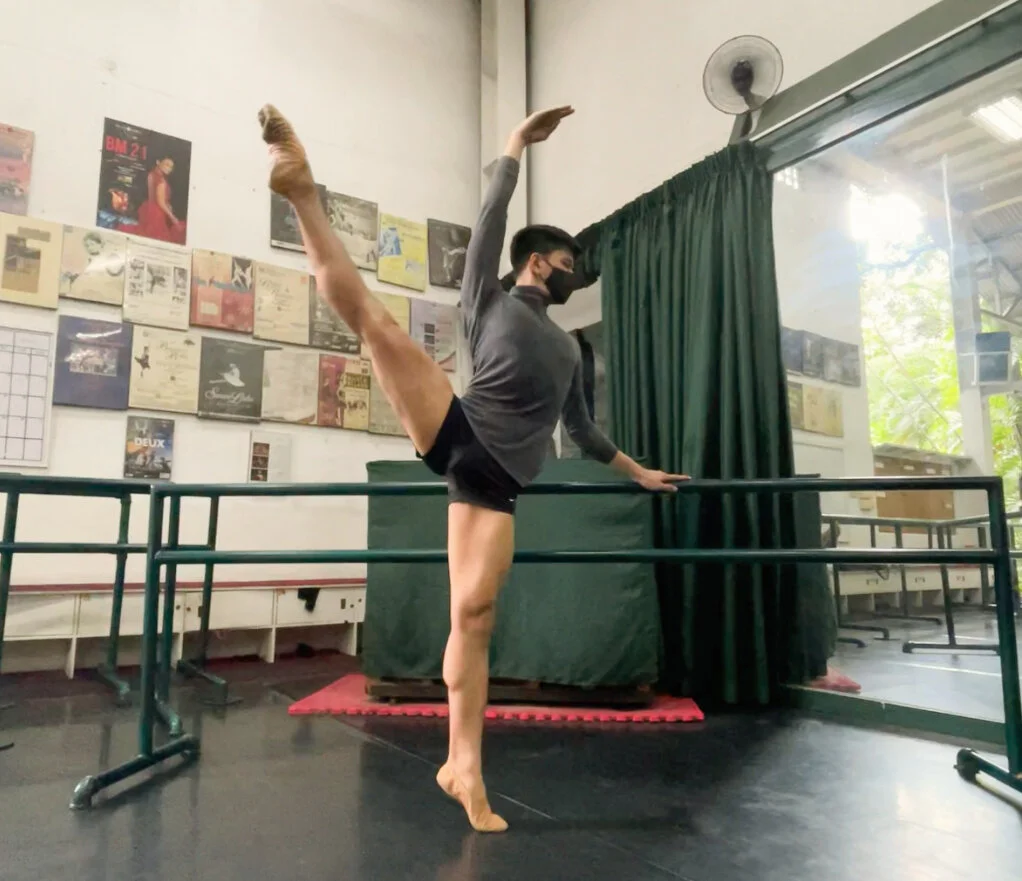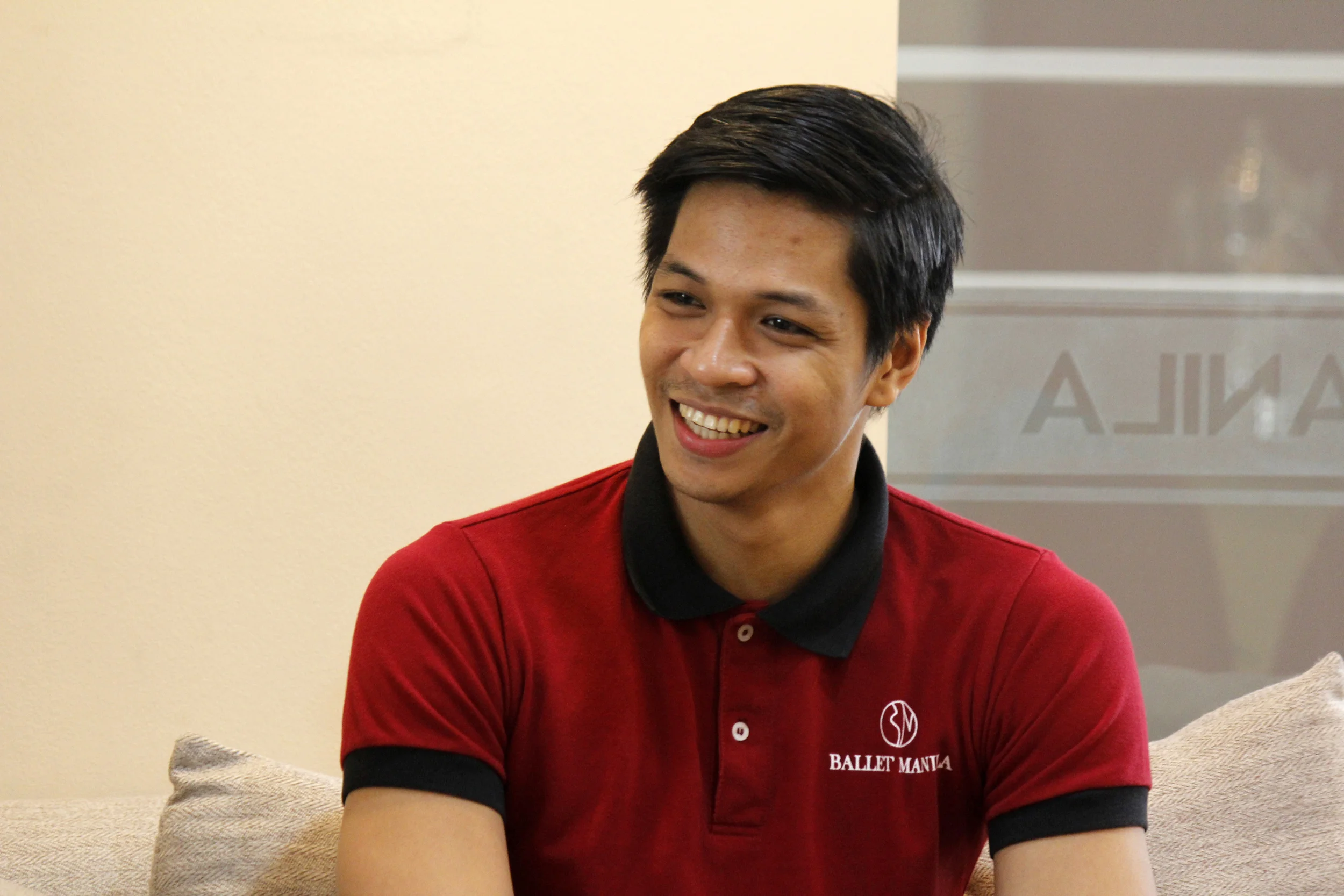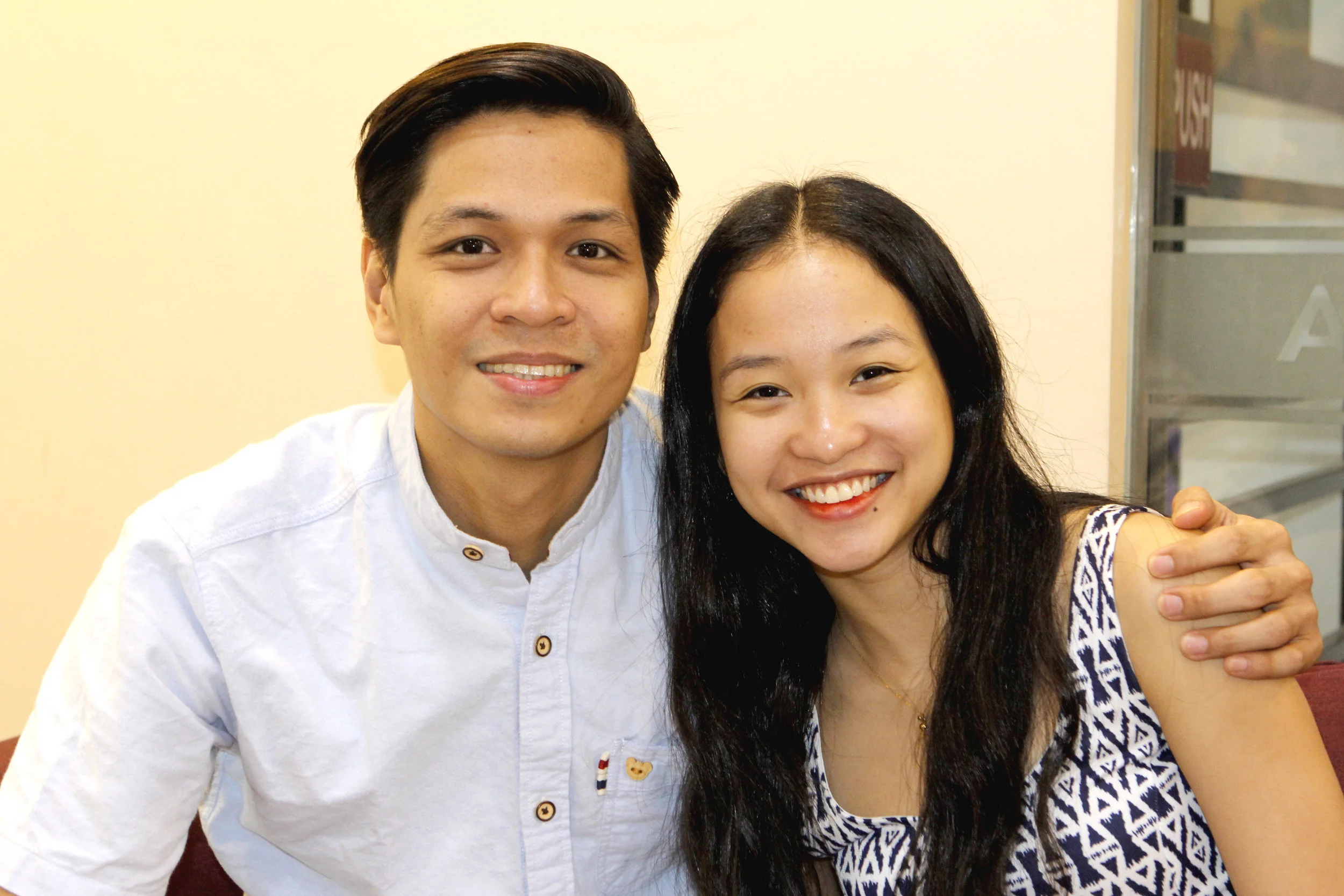Principal dancer Mark Sumaylo: Ballet is in the heart
To break the monotony of lockdown routine, Mark Sumaylo took photographs including of this pair of pointe shoes now printed on masks produced by Arts & Letters.
By Jv Ramos
Being one of the senior dancers in Ballet Manila, Mark Sumaylo took the news of the community lockdown back in March 2020 quite well. He, together with his girlfriend, fellow principal dancer Abigail “Abi” Oliveiro, considered the two-week break from work as nothing more than another challenge to keep their bodies in shape.
The pandemic has been tough for performing artists like him, but principal dancer Mark Sumaylo asserts that ballet is still the one thing he loves to do.
“Siyempre kung wala ang studio, ang pinaka-challenge sa aming mga dancers ay mag-stay fit. So ayun, gumawa kami ni Abi ng daily routine para mag-stay fit na hindi ginagamit ang studio, gym, o basketball court. Bawal kasi talaga gamitin ang mga ito noon.” (Of course, the biggest challenge for us dancers when we’re not in the studio is to keep in shape. So during the lockdown, Abi and I had to create a routine that didn’t involve using the studio, gym, or basketball court because these places were closed.)
So what was their lockdown routine like? Mark notes that to keep fit, they’d stretch together, take their ballet classes online, and have an extra workout by taking the stairs from the ground floor to the roof deck of their building. He and Abi were basically making the no-studio situation work for them; but soon, the repeated lockdown extensions – not to mention an exposure to a COVID-19-positive resident in their condominium – made things rather difficult.
“Siguro nagsimula nang mag-iba talaga ang view ko sa pandemic nu’ng kinailangan naming mag-quarantine ng 14 days. Nakakulong lang kasi ako sa bahay, tapos, na-feel ko na rin na nasa isang lugar na lang ako gumigising, nagta-trabaho at natutulog araw-araw. Sobrang frustrated ako kasi wala akong magawa para mabago ito.” (My view about the pandemic only began to change when we had to self-quarantine for 14 days. Since I had to isolate at home, I felt I was only waking up, working and sleeping in the same place every day. I got so frustrated because I couldn’t do anything to change things.)
Mark has danced several prince roles, including Siegfried in Swan Lake, but one character he’d like to take on given the chance is Romeo in Romeo and Juliet. Photo by Giselle P. Kasilag
Mark points out that the situation wasn’t just about being confined in one place. “Mas nakaka-frustrate kasi hindi talaga friendly ang maliit na space sa mga dancers na katulad ko na may history ng injury sa likod at tuhod. Kailangan talaga na nasa studio ka para makagalaw ka nang maayos.” (It was more frustrating because enclosed spaces aren’t really friendly to dancers like me who have a history of back and knee injuries. You really need to be in the studio so you can move adequately.)
Recognizing that his dissatisfaction could lead to angry outbursts, Mark discussed what he was going through with his partner and requested that she give him space to recover in his own way. “Dahil frustrated nga ako, nawalan ako ng gana. May mga araw na ayaw kong mag-exercise, kaya manonood lang ako ng TV. May mga araw din na umiinom lang ako at nag-e-enjoy. Hinayaan lang ako ni Abi na gawin iyon, dahil nag-promise naman ako sa kanya na babalik ako kung ready na ako.” (Because I was frustrated, I didn’t have the energy anymore to put in the work. There were days when I didn’t feel like exercising, so I just watched TV. And there were also days when I would just drink and enjoy. Abi allowed me to go through all that, because I promised her that I would go back when I felt ready.)
Looking back at that dark period, the danseur – who transferred to Manila from Cagayan de Oro to pursue a ballet career – comments that more than anything, the days wherein he chose to not push himself were “only a breather” from the eat-work-sleep-cycle he was trapped in. “Parang time for myself ko lang ‘yon. Na-notice ko kasi na sa kahit anong pag-push ko sa sarili ko, hindi ko nagagawa ang workout ko nang maayos. Nu’ng na-feel ko ‘yon, alam ko na hindi na healthy ang pag-push ko. Mas na-i-stress ako kapag pinilit ko.” (For me, it was about taking time for myself. I felt that I really needed it when I could no longer do workouts well no matter how hard I pushed. Pushing myself to do things wasn’t healthy anymore because I couldn’t do it well. I would just be stressing myself.)
Mark as Hilarion pleads for mercy from Myrtha (Akari Ida), queen of the wilis, in Giselle as she leads the spirits in forcing him to dance to his death. Photo by Giselle P. Kasilag
The principal dancer says that engaging in other activities such as redecorating their living space, playing games on an old PS4, and taking on photography assignments helped him deal with pandemic pressures so much better. “Nalilibang ka kasi kaya hindi mo napapansin ang oras. Ang pinaka-ayaw ko sa lockdown ay ang feeling na ang tagal ng oras. Paulit-paulit lang kasi ang ginagawa mo. Tapos, ma-di-dismaya ka pa kapag nag-lu-look forward ka sa end of lockdown na nagiging extension lang.” (If you’re busy pursuing other things, you hardly notice the time. That’s what I didn’t like about the lockdown. You felt that time was always slow because you would just be doing the same things. Then you’d just get dismayed when you’re expecting the lockdown to end, only to find out it’s being extended.)
“Kaya naman ngayon iba na ang perspective namin ni Abi. Hindi na kami nag-lu-look forward; day by day na lang.” (The lockdown extensions have changed our perspective. Abi and I no longer look forward to things; we just take things day by day.) Mark emphasizes that times are different now – that what may have worked for dancers before may not be as helpful now. “A good day for us now is not about being able to do extra work. It’s already a good day if you’re able to go through company class and not feel any pain in your body, and if you’re able to teach, choreograph, and do demos the best way you can. Teaching kids can be very draining, and you shouldn’t feel bad about it.”
Mark sums up that the most important lesson he learned through this experience is the need to rest. “Kung ipipilit mo kasi ang mga bagay, magagalit ka lang at ma-ko-compromise ang results. Just do your best in the moment, and hayaan mo na lang muna. Huwag ka nang magpa-stress sa things you can’t control.” (If you force things to happen, you’d just get angry and only compromise the results. Just do your best in the moment, and let things be. Don’t stress about things that are out of your control.)
As Prinsipe Pedro in Ibong Adarna (2017), Mark is the first of the king’s three sons to go on a quest for the mythical bird. Photo by Giselle P. Kasilag
But if there’s anything that worked for him then and now when it comes to facing ballet’s toughest times, it is his healthy relationship with Abi. “Kami kasi hindi nagsasabay,” comments Mark when asked how they support each other’s mental health. “Kung down ang isa sa amin, hinahatak talaga nang pataas ng isa. Natutuwa ako na tuwing disappointed ako sa sarili ko o gustong sumuko, laging nandiyan si Abi para magsabi na ‘that’s okay’ o ‘tomorrow is another day.’” (We are never in the same emotional state… When one is feeling down, the other makes sure that he or she pulls the other up. I’m very thankful that whenever I feel disappointed or feel like giving up, Abi is always there to tell me ‘that’s okay’ or ‘tomorrow is another day.’)
With live shows still suspended due to the pandemic, Mark admits he can’t help but think more about possible options he could pursue after ballet. “Siyempre, nandiyan ang photography. Pero sa ngayon, feeling ko na ang photography ko ay hobby lang. Hindi ko alam kung masu-sustain ko siya, so nagpa-plano akong mag-aral ng Pilates para ito naman ang ituturo ko kung hindi na ako makasayaw.” (Of course, there’s my photography. But for now, I see it only as a hobby. I’m not sure if I can sustain it, so what I plan to do is study Pilates which I can teach when I’m no longer able to dance.) Mark reasons that so many workout routines have been developed based on the principles of Pilates, and that with formal training in it, he feels he would be able to design a program to help dancers strengthen their bodies and prolong their careers.
“Hindi naman sa ayaw ko nang mag-ballet kaya ko ito iniisip,” clarifies Mark. “Ang pinaka-goal ko ngayon ay makasayaw ng isang kumpletong performance season para malaman ko ang kakayahan ng katawan ko.” (It’s not because I’m giving up on ballet that I’m making all these plans. My main goal right now is to complete a performance season, so I can gauge what my body can do.) Being in his 30s, he states it’s better to be ready with options than to be clueless about your future when the day comes that he is told he can no longer dance.
The dance film Walang Hanggang Paalam (2020) features real-life partners Mark Sumaylo and Abigail Oliveiro and several other Ballet Manila artists in a celebration of eternal love.
“Realistic lang ako so nag-pe-prepare ako, pero ballet pa rin ang nasa puso ko talaga! In fact, kung sabihan ako na kailangan ko nang mag-transition, aalamin ko muna kung bakit at titignan ko kung puwede kong gawan ng paraan ito, kasi gusto ko talagang mapahaba ang career ko.” (I’m just a realistic person so I am preparing; but really, dancing ballet is really still in my heart! In fact, if they were to tell me that I need to transition already, I would want to know why and see if I can still fix it, because what I really want is to prolong my career.)
Working on lengthening one’s ballet career is clearly something that Mark can’t stress enough, and for dancers to be successful at it, he points out that hard work shouldn’t just be limited to the classroom. “Dapat hindi ka lang masipag kapag may nakakakita sa iyo. Kailangan may extra time kang mag-work harder and smarter. Aralin mo na rin agad ang injury prevention at kung ano ang puwede mong gawin outside of ballet na makakapagpalakas sa katawan mo. Napaka-importante ‘yan kung seryoso ka sa ballet… Puwedeng ballet nga ang nasa puso at utak mo, pero kung ayaw na ng katawan mo, wala rin.” (You shouldn’t just be hardworking when the artistic directors are watching. You have to allot extra time to work harder and smarter. Learn all about injury prevention and engage in activities outside ballet that would strengthen your body. These things are very important if you’re serious about ballet… Ballet may be what’s in your heart and head, but you can’t continue it with an injured body.)
One of Mark’s last on-stage performances before lockdown last year was in his hometown of Cagayan de Oro where he and soloist John Balagot danced Gerardo Francisco’s OFW.
The danseur continues, “It’s all about working honestly. Kung ganyan ka kasi, rain or shine, alam mo lagi kung ano ang gagawin. Tapos, kapag tinawag ka, ready ka lagi.” (If you work like that, you’ll always know what to do, rain or shine. And with it, you’ll always be ready for anything.)
Given that most activities are still being done virtually, some dancers may choose to relax and not put in as much effort than if they were in the studio. But for Mark, he sees to it that everything he does, including allowing himself to rest, would buy him as much time with Ballet Manila as possible. "Lahat ng ginagawa ko ngayon ay para makasayaw pa ako, at para mas lalo pang mapatagal ang ballet career ko.” (Everything I do these days is for me to be able to dance in front of an audience again and to extend even more my years of dancing ballet.)
Mark and Abi are the ill-fated couple, Don Jose and Carmen, in Eric V. Cruz’s Carmen, staged as part of Iconic 2.0 in 2018. Photo by Giselle P. Kasilag






